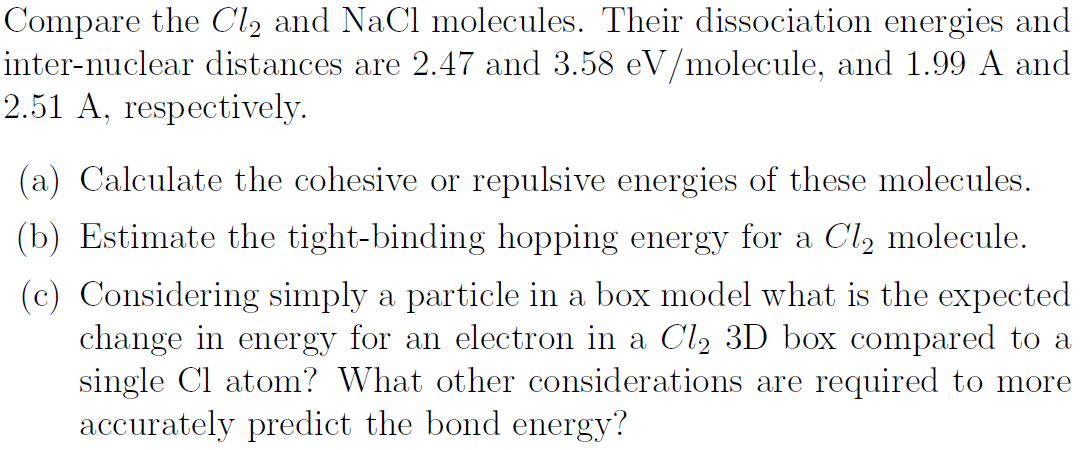Compare the Cl2 and NaCl molecules. Their dissociation energies and inter-nuclear distances are 2.47 and 3.58 eV/molecule, and 1.99 A and 2.51 A, respectively. (a) Calculate the cohesive or repulsive energies of these molecules. (b) Estimate the tight-binding hopping energy for a Cl, molecule. (c) Considering simply a particle in a box model what is the expected change in energy for an electron in a Cl2 3D box compared to a single Cl atom? What other considerations are required to more accurately predict the bond energy?
Compare the Cl2 and NaCl molecules. Their dissociation energies and inter-nuclear distances are 2.47 and 3.58 eV/molecule, and 1.99 A and 2.51 A, respectively. (a) Calculate the cohesive or repulsive energies of these molecules. (b) Estimate the tight-binding hopping energy for a Cl, molecule. (c) Considering simply a particle in a box model what is the expected change in energy for an electron in a Cl2 3D box compared to a single Cl atom? What other considerations are required to more accurately predict the bond energy?
Related questions
Question
Solid State Physics:

Transcribed Image Text:Compare the Cl2 and NaCl molecules. Their dissociation energies and
inter-nuclear distances are 2.47 and 3.58 eV/molecule, and 1.99 A and
2.51 A, respectively.
(a) Calculate the cohesive or repulsive energies of these molecules.
(b) Estimate the tight-binding hopping energy for a Cl, molecule.
(c) Considering simply a particle in a box model what is the expected
change in energy for an electron in a Cl2 3D box compared to a
single Cl atom? What other considerations are required to more
accurately predict the bond energy?
Expert Solution
This question has been solved!
Explore an expertly crafted, step-by-step solution for a thorough understanding of key concepts.
Step by step
Solved in 3 steps
